Golden Walls and Quiet Whispers: Walking Through Bukhara
A Historical Exploration of Uzbekistan – Part III.
Read Part I and Part II of this series before you dive into this post.
If I had to pick a favourite city in Uzbekistan, it would be Bukhara. There was something about it—maybe the warm honey-coloured brickwork, the gentle pace, or the way history seemed to hum quietly under everything—that made me feel instantly at ease. It felt like walking through a Silk Road city still very much alive, not preserved in amber. Unlike Samarkand or Tashkent, which felt more polished or fast-paced, Bukhara held on to something older, slower, more grounded.
We took the high-speed Afrosiyob train from Tashkent to Samarkand, and similarly, took a train from Samarkand to Bukhara. I loved how clean and efficient the train stations and trains were, making the journey feel like a breeze. In Bukhara, we stayed inside the old city walls, which meant everything we wanted to see was just a short walk away. That made all the difference—especially when we wandered aimlessly through alleyways at dusk and beyond.
A Brief History of Bukhara
From Rameen, we learned that Bukhara was founded by Siyah Yush, a character from ancient Persian legend. Over the centuries, the city became a spiritual and intellectual centre of the Islamic world, once known as the "Dome of Islam"—a title reflecting its status as a beacon of learning and faith to the east of Baghdad, the then-capital of the Islamic Golden Age. Bukhara was home to one of the greatest libraries in the Islamic world, second only to Baghdad’s famed House of Wisdom. While Mecca, Medina, and Jerusalem were the spiritual heart of Islam, cities like Baghdad and Bukhara were its cultural and intellectual capitals. At its height, Bukhara attracted scholars, poets, scientists, and theologians from across Central Asia and the Middle East.
Like Samarkand, Bukhara was a major stop on the Silk Road—but the two cities couldn’t feel more different. Bukhara is more subdued, golden, and grounded. The architecture here is built with warm, honey-toned bricks, giving the entire city a soft, sunlit glow. It feels lived-in, layered, and timeless—less grand than Samarkand, but more intimate and cohesive.
Of all the historic cities in Uzbekistan, Bukhara maintained its prominence the longest. Its growth was steady and sustained, unlike Samarkand, which rose and fell more dramatically with the fortunes of empire. That said, Bukhara wasn’t spared from destruction: when Genghis Khan invaded in the early 13th century, he razed the city, massacred its inhabitants, enslaved women and children, and leveled its monuments. What we see today was largely built in the centuries that followed.
Bukhara experienced a second golden age under the Shaybanid (or Shibanid) dynasty in the 16th century, after the fall of the Timurid Empire. One of the most notable rulers was Abdullah Khan II, who invested heavily in religious education and architecture. Many of the city’s most iconic madrasas, mosques, and caravanserais were built during his reign.
As a Silk Road hub, Bukhara traded far more than just silk. Its covered bazaars were highly specialized—there was a market for jewellery, one for caps, and another for currency exchange and money-lending. These financial traders were often Afghan, Armenian, or Indian. India, in particular, played a major role in Bukhara’s trade network, exporting textiles, spices, indigo, ivory, and other luxury goods.
Exploring Bukhara on Foot
We began our exploration of Bukhara with a walk along what remains of the ancient city wall. Once a formidable structure encircling the old town, these mud-brick fortifications hint at Bukhara’s past as a heavily protected Silk Road stronghold. Though much of the wall has crumbled with time, standing beside its remnants gives you a tangible sense of the city's once-mighty defenses and the layered history held within its gates.
We then visited Ismail Samani Mausoleum, Imam al-Bukhari Mausoleum, and Bolo Hauz mosque.
Tucked away in a quiet park, the Ismail Samani Mausoleum is one of Bukhara’s oldest and most beautiful buildings—built in the 10th century and miraculously spared by Genghis Khan’s invasion. Its intricate brickwork, done without any mortar, creates geometric patterns that shift subtly with the light. It’s humble in size but profound in presence, marking the resting place of a Samanid ruler and the dawn of Islamic architecture in Central Asia. It was the basis of a lot of developments in Islamic tomb architecture, and is the oldest tomb that’s in its original state, with stunning basket woven brickwork.
Though the famed hadith scholar Imam al-Bukhari is buried near Samarkand, Bukhara honors his legacy with a mausoleum dedicated to his memory. Imam al-Bukhari Mausoleum sits at a peaceful, reflective spot, especially meaningful for those familiar with his contributions to Islamic scholarship. The mausoleum’s architecture is a hat tip to Ismail Samani’s Mausoleum.
Bolo Hauz Mosque is located opposite the Arc of Bukhara and was used by the royal khan of Bukhara for his prayers. Its most distinctive feature is the forest of slender wooden columns that support the richly decorated ceiling of the iwan (entrance hall). Built in the 18th century, it was the Emir’s Friday mosque, and the peaceful pond in front adds to its charm—especially when the building’s reflection shimmers in the water.
We spent the rest of the evening walking around the fort, which is dotted with shops selling souvenirs and handicrafts - from silk and cotton clothing featuring Uzbeki ikat prints to carpets and ceramics. We also strolled through the Toqi (jewellery) market, the south of which was the Indian caravan sarai where Indian merchants stayed when they came to trade back in the day. Dinner was at Terrace cafe, where my mother and I devoured the Plov (made of rice, red and yellow carrots, chickpeas, and raisins) and Permeni (meat dumpling soup with dill) while enjoying live music.
Of Souks, Minarets and Sunset
Our second day in Bukhara was spent exploring the Poi Kalon complex—anchored by the towering Kalon Minaret, the Kalon Mosque, and Mir-i-Arab Madrasa—which is the heart of the city’s spiritual and architectural identity. We then walked around Lyabi Hauz, a lively square centered around a pond, flanked by madrasas and teahouses—perfect for people-watching, shopping, and imagining the city’s past life as a bustling caravan stop. The Trading Domes still hum with life, once specialized markets now filled with carpets, ceramics, and silk clothing. Every alley in Bukhara seems to end in a portal, a blue-tiled dome, or a quiet courtyard—each one whispering a piece of history.
We went back to Terrace Cafe for dinner, where we caught hues of a gorgeous sunset behind the domes while enjoying our Māstāba - a traditional Uzbek and Tajik soup, also called liquid pilaf.
The City That Lingers
Bukhara is a place best experienced on foot through unhurried walks, whispered prayers in centuries-old mosques, and saffron tea shared in shaded courtyards. The city invites you to pause, look closer, and stay a little longer. It doesn’t shout for attention but lingers in the details, and if you’re willing to slow down, it quietly stays with you long after you’ve left.
Stay tuned for Part IV of this series.












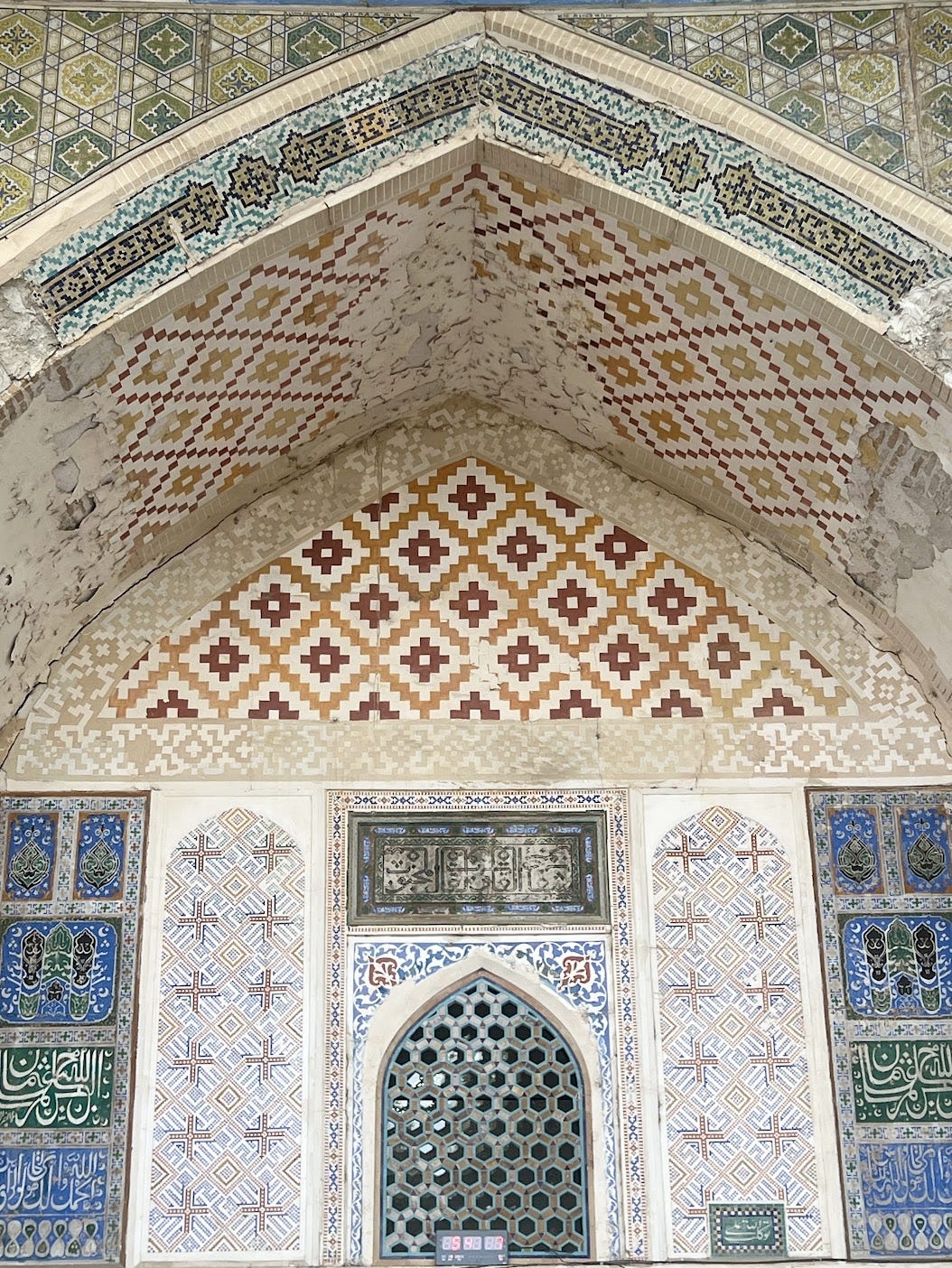


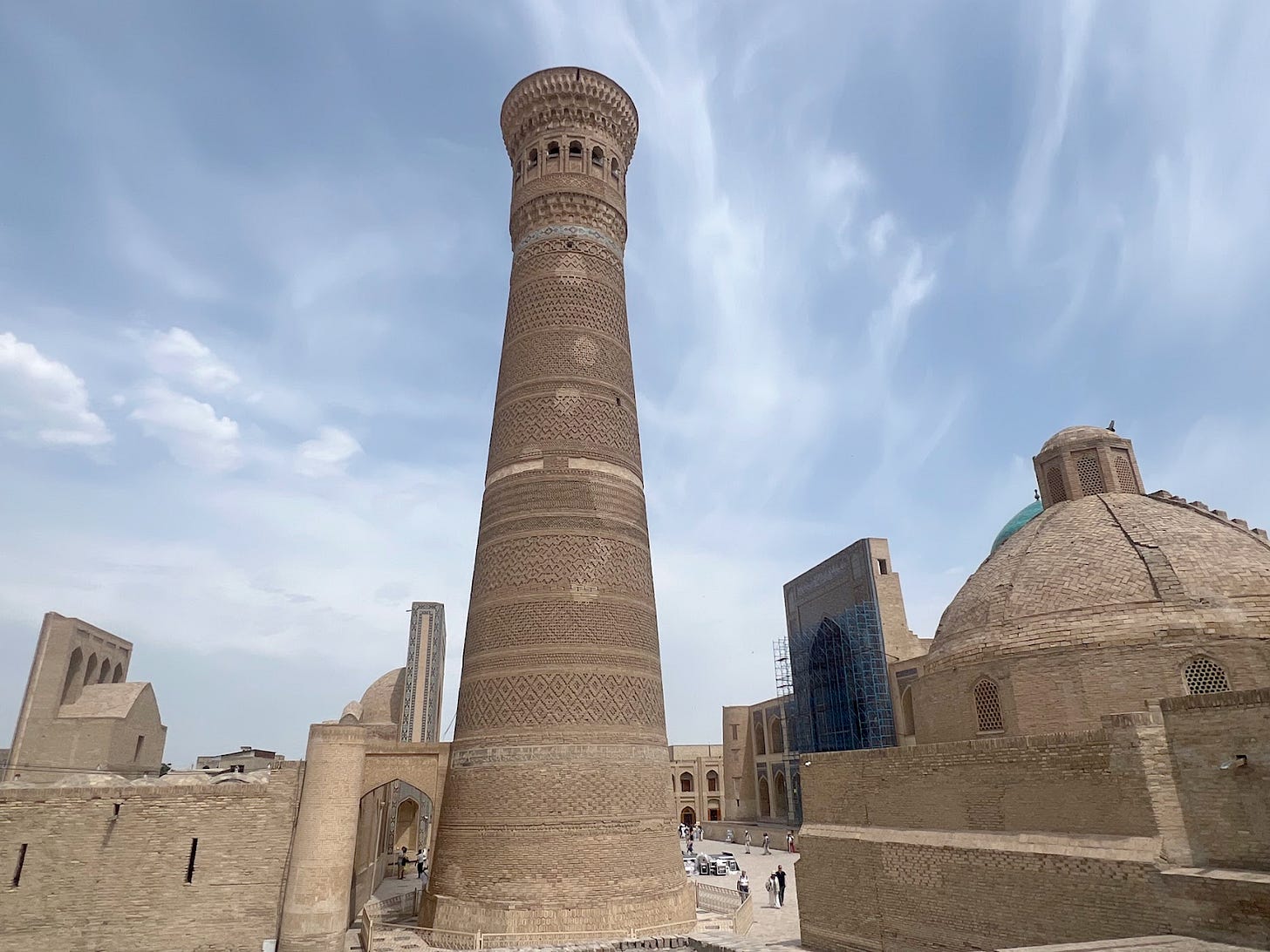

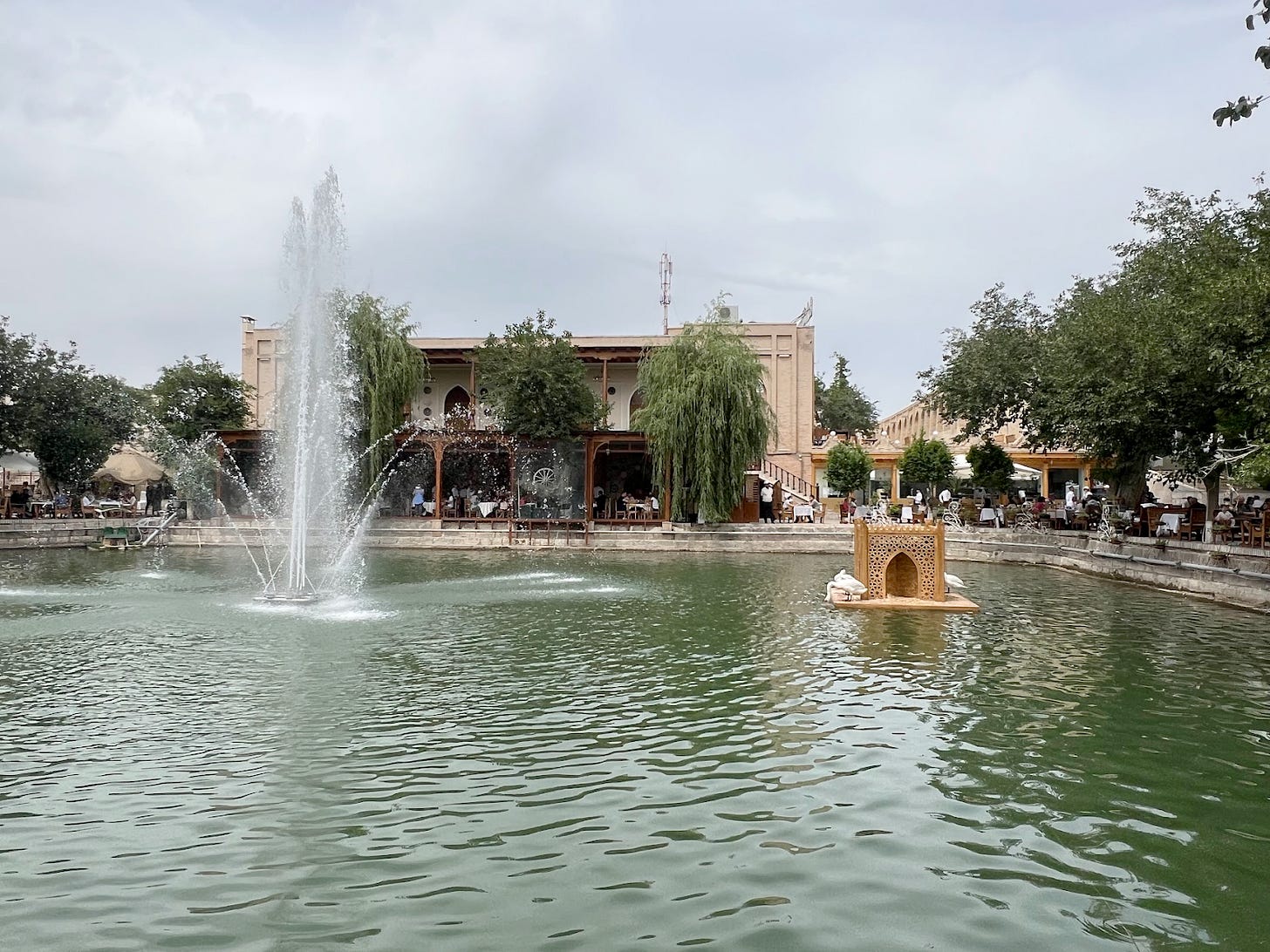

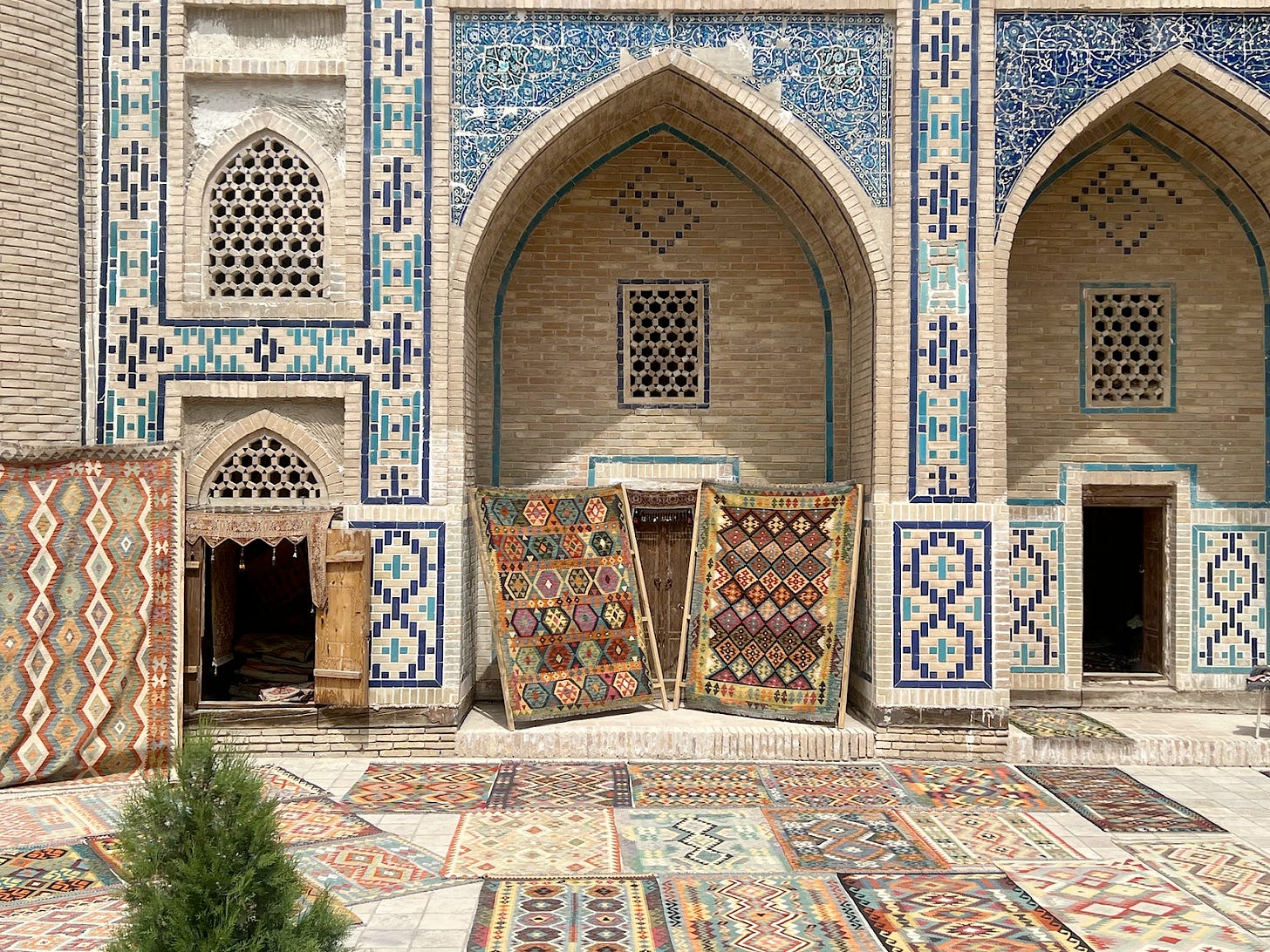
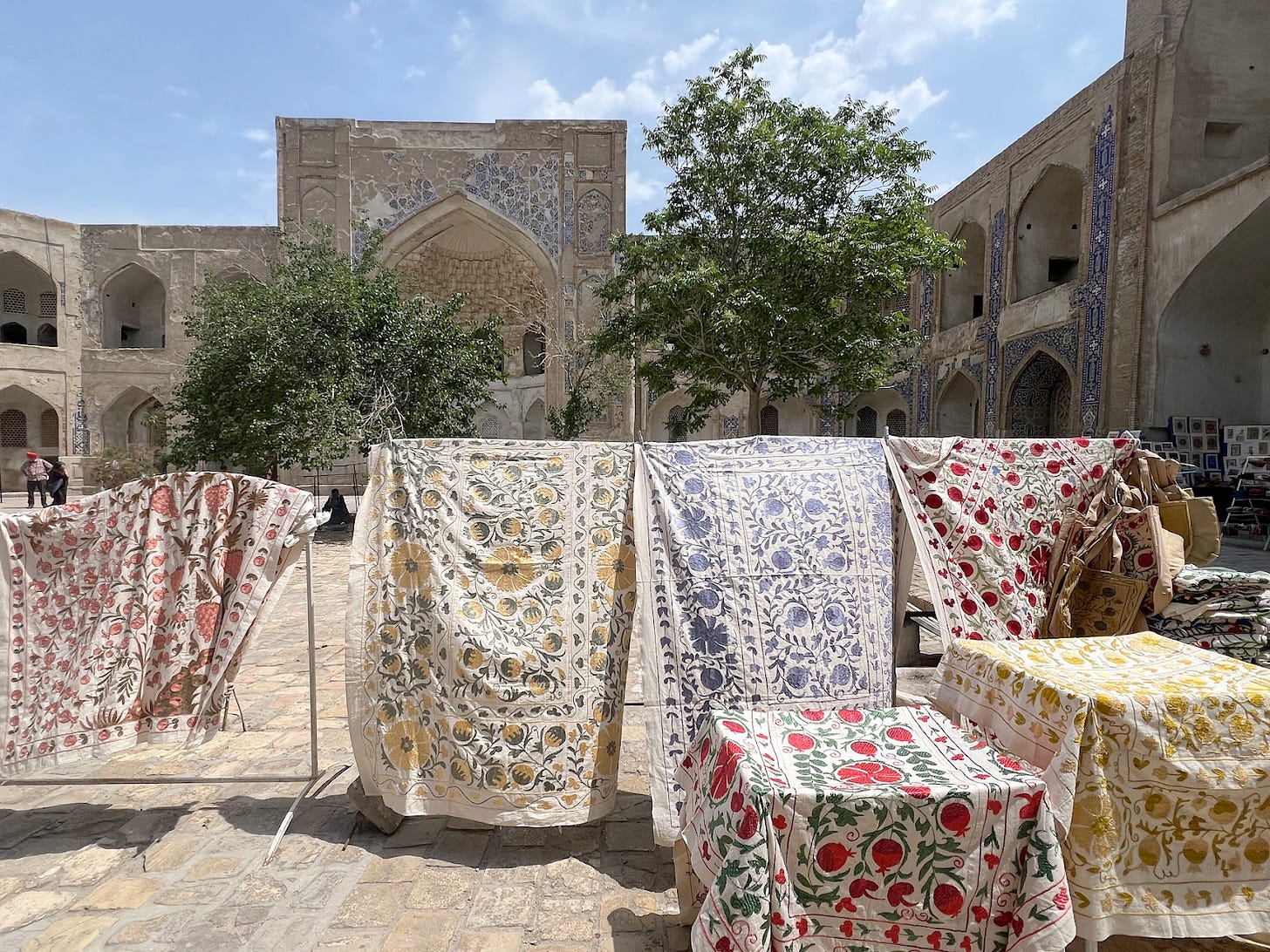





Nice reading. As usual. No doubt Bukhara was the most beautiful amongst the four visited. The city was mix of walled and modern urban settlement. When you stay outside the wall city and access these beautiful older structure through crossing the well maintained manicured gardens and a disciplined traffic on roads, you could imagine transforming yourself back to the hundreds of year of earlier civilizations - physically and mentally. I could even feel change in my walk and facial expressions.
Lit of similarity with parts of Kashmir. Strong culture and traditions. Next visit hopefully